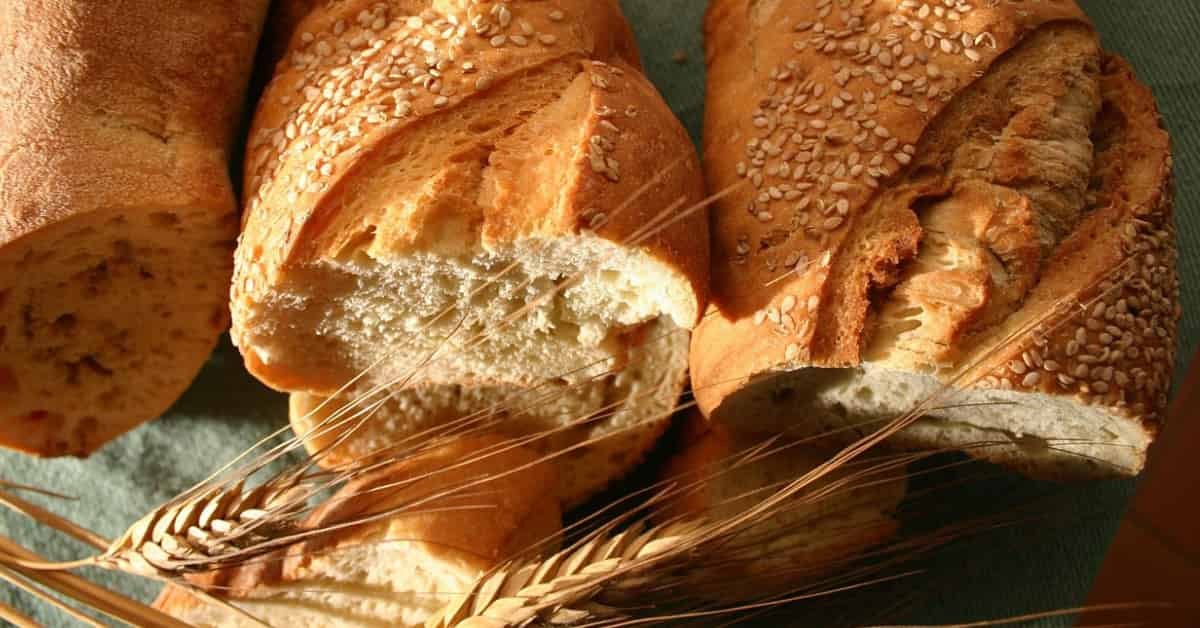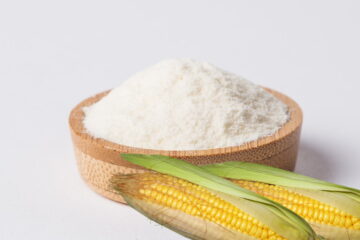Table of Contents
Introduction
Whole wheat bread is believed to be a nutritious complement to a well-rounded diet and can be a perfect choice for increasing whole-grain intake. While the nutritional value may vary depending on brand and recipe, whole wheat bread has many health advantages.
Wheat bread
Wheat bread is a specific term for any bread made, especially flour derived from kernels. Nevertheless, in everyday nutrition, the term is highly associated with, and often used interchangeably with, Whole Wheat Bread (or Wholemeal Bread). This difference is crucial, as the training method defines the final nutritious profile.
True Wholemeal bread is made using 100 percent whole wheat flour, meaning the entire wheat kernel—the bran, germ, and endosperm—is ground and included. This explanatory factor makes it a better choice than white bread made from refined flour, which has removed the nutritious bran and germ.
The rise of whole wheat bread reflects a shift toward traditional, less processed foods. Loved for its dense texture, rich flavor, and adequate fiber, protein, and micronutrient range, 100 percent whole wheat bread is widely suggested by health associations as a cornerstone of a balanced diet, delivering key advantages for heart health, blood sugar control, and digestion.
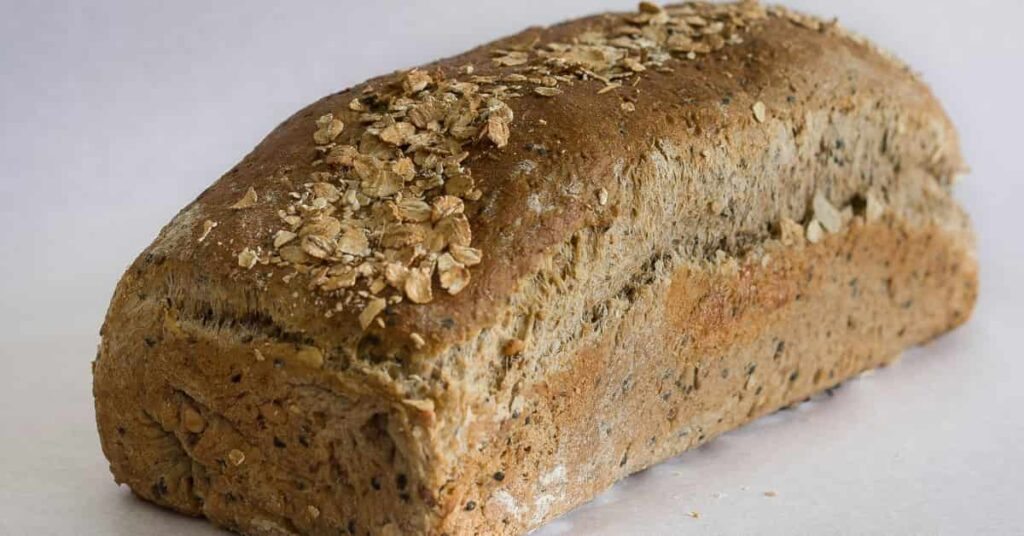
Wheat Bread Nutrition
The USDA delivered nutrition information for one slice (43g) of wheat bread.
United States Department of Agriculture. FoodData Central. Whole-grain bread.
- Calories: 80
- Sodium: 170mg
- Carbohydrates: 20g
- Fiber: 3g
- Sugars: 4g
- Protein: 5g
- Calcium: 9.03mg
- Iron: 1mg
- Potassium: 95mg
Carbs
This bread is packed with complex carbohydrates, which take longer for the body to process and manage to impact blood sugar at a slow, controlled pace. An intermediate slice contains 12 to 20 grams of carbohydrates and considerable fiber (3 grams per slice).
Some Wholemeal bread may include additional carbs from added sugars, which are detailed in the “Counted Sugars” area of a nutrition facts label.
Fats
Unless Wholemeal bread is created with added oil, it includes no fat. Check component labels to see if oils have been used in store-bought bread.
Protein
Whole wheat bread isn’t just a valuable source of complex carbs—it’s also rich in plant-based protein. A piece of Wholemeal bread can include up to 5 grams of protein.
Vitamins and Minerals
The vitamins and minerals in this bread vary widely, depending on what a manufacturer adds through enrichment. Most Wholemeal bread includes minor amounts (under 10% RDI{Respiratory Disturbance Index}) of iron, potassium, and B vitamins: thiamin, niacin, riboflavin, and folate. If a formula contains salt, the bread will also include sodium.
Calories
One slice (43g) of whole wheat bread delivers eighty calories.
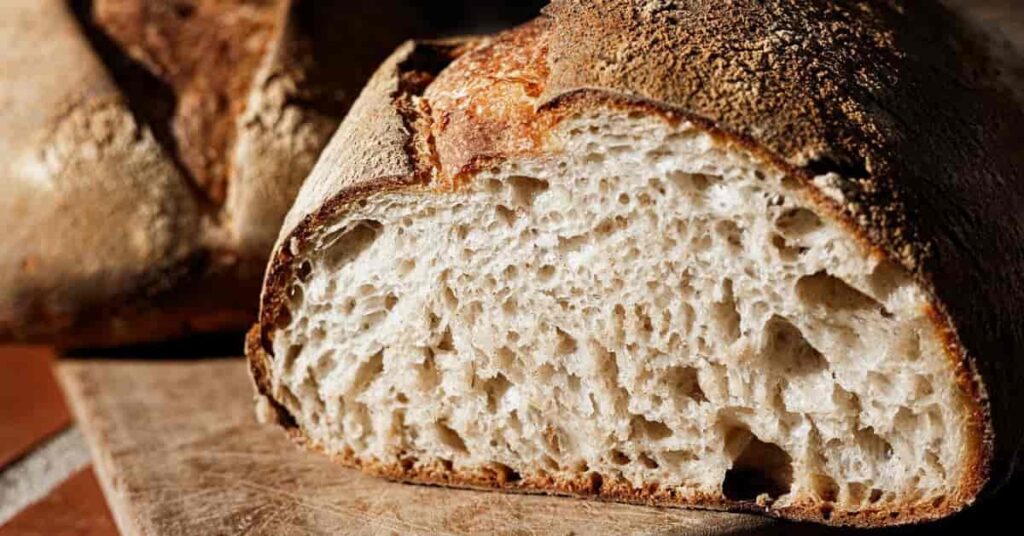
wheat bread calories
A slice of this bread generally includes between 65 and 92 calories, averaging 75-80. The number of calories may differ depending on the brand, slice thickness, and specific ingredients, such as whole wheat or mixed grain.
- Average slice: Approximately 75–80 calories
- Thinner slice: Around 65 calories
- Thicker or whole-grain slice: Can be higher, such as 81 calories for a 32g slice or 92 calories for a thin slice
Wheat bread protein
This bread contains a significant amount of protein, approximately 3–4 grams per slice or 9–14 grams per 100 grams, depending on the kind and recipe. This protein comes from the this grain, along with fiber and B vitamins, creating whole wheat bread a more nutrient-dense choice than white bread.
Protein content in wheat bread
- Per slice: A commercially designed whole wheat bread includes about 3 grams of protein.
- Per 100 grams: The protein content for 100 grams of whole wheat bread is about 9 to 14 grams, but this can differ by brand and recipe.
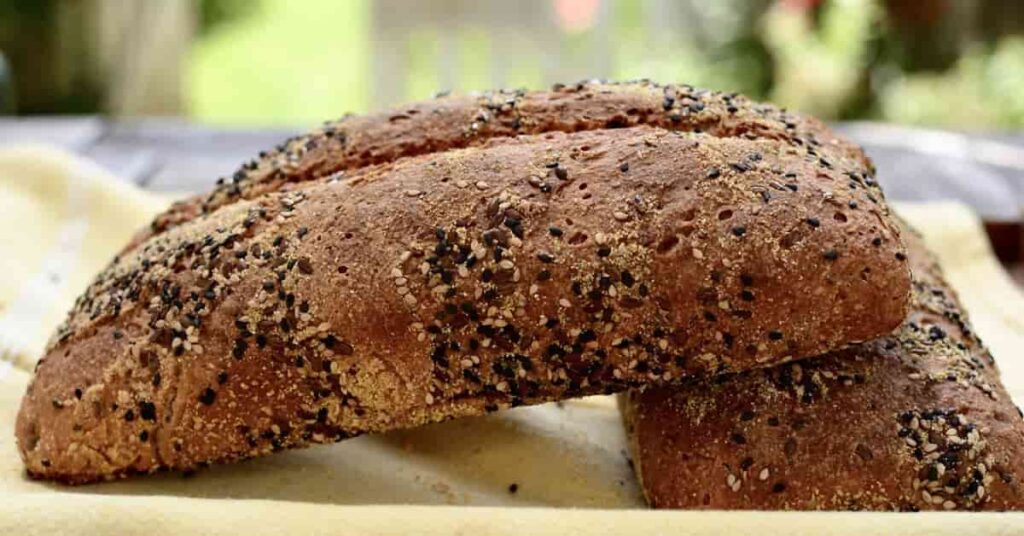
Wheat bread benefits
Whole wheat bread, especially that labeled as 100 percent whole wheat or 100% whole grain, offers significant health advantages compared to white or refined bread because it retains all three components of the wheat kernel: the bran, the germ, and the endosperm.
Here are the immediate health advantages of whole wheat bread:
1. Superior Digestive Health
- High in Dietary Fiber: Whole wheat bread is a fantastic source of fiber (typically 2-4 grams per slice), which is released mainly in white bread. This fiber is vital for supporting digestive regularity.
- Prevents Constipation: The insoluble fiber in the bran adds bulk to stool, allowing to prevent and relieve constipation.
- Supports Gut Microbiota: The fiber acts as a prebiotic, providing the healthy bacteria in the colon, which is crucial for a healthy gut ecosystem, nutrient absorption, and fortified immune function.
2. Cardiovascular and Heart Health
- Lowers Cholesterol: Soluble fiber lowers harmful low-density lipoprotein (LDL) cholesterol levels by tieing to cholesterol in the digestive tract and facilitating removal.
- Reduces Risk of Heart Disease: Investigations consistently link a diet wealthy in whole grains to a significantly reduced risk of cardiovascular illness, stroke, and lower blood pressure.
- Provides Essential Nutrients: Whole wheat is a source of heart-healthy nutrients like Vitamin E, Magnesium, and potassium, which assist regulate blood pressure and lower inflammation.
3. Blood Sugar Management
- Lower Glycemic Index (GI): Whole wheat bread is usually digested more slowly than refined white bread due to its high fiber content. This leads to a more incremental and sustained release of glucose into the bloodstream.
- Lowers chance of Type 2 Diabetes: Regular consumption of whole grains improves insulin sensitivity and is associated with a lower chance of acquiring Type 2 diabetes.
4. Sustained Energy and Weight Control
- Boosts Satiety: The mixture of fiber and protein (3–5 grams per slice) keeps you fuller for vast periods, decreasing the likelihood of overeating or snacking on less nutritious foods.
- Sustained Energy: The complex carbohydrates are broken down slowly, delivering a steady energy source throughout the day and avoiding the sharp energy spikes and impacts of refined carbohydrates.
5. Prosperous in Essential Micronutrients
- Vitamins: Whole wheat is inherently rich in B vitamins (Thiamin, Niacin, and Folate), essential for energy metabolism and nervous system function.
- Minerals: It is a valuable source of minerals like Iron (necessary for red blood cell production), Magnesium (important for bone health & muscle function), and Zinc (essential for immune support).
Wheat bread ingredients
Wheat bread ingredients include whole wheat flour, salt, yeast, and water. Sweeteners (like sugar, honey, or molasses) and fat (like oil, butter, or milk) are supplemented to enhance flavor and texture. Different flours, like bread flour, can even improve structure.

wheat bread vs brown bread
Several kinds of bread have key distinctions in the processing, which greatly distinguish their nutritional benefits.
- Brown bread doesn’t include bran, germ, and endosperm like whole-grain bread, making it nutritionally deficient in vitamins, protein, fat, and carbohydrates.
- Wholemeal Bread includes more fibre than brown bread made with a very high concentration of refined flour. Fibre assists in preventing constipation, lowers the risk of cancer, lowers bad cholesterol, decreases the risk of heart disease, and diminishes blood sugar, lowering the risk of diabetes.
- Fibre-rich whole wheat bread makes you feel fuller & satiated compared to refined flour-containing brown bread. Wholemeal Bread also contains many nutrients, making it a wise choice.
- Brown Bread includes additives, for example, caramel to give it a brown colour, since whole wheat bread doesn’t have artificial or synthetic colouring.
This comparison shows brown bread is nutritionally deficient and often confused with Wholemeal Bread. Commercial bread includes additives and preservatives, whereas homemade bread is fresh, healthy, and delicious.
Wheat bread is good for health.
Yes, whole wheat bread is beneficial because it’s rich in fiber, vitamins, & minerals, which can help digestion, control blood sugar, and assist with weight control. Nevertheless, not all “wheat” bread is equal; for maximum advantage, choose 100 percent Wholemeal Bread to ensure the bran and germ are intact, and check the label for added sugars.
Advantages of whole wheat bread
- High in fiber: The fiber in Wholemeal Bread aids digestion, controls constipation, and makes you feel fuller for longer, which can sustain weight management.
- Controls blood sugar: It has a lower glycemic index than white bread, indicating it releases sugar into the bloodstream more gradually and steadily, controlling spikes in blood sugar.
- Nutrient-rich: Wholemeal Bread includes important nutrients like B vitamins, zinc, iron, and Magnesium, which are often removed from white bread during processing.
- Supports heart health: A diet with high-fiber whole grains is connected to a lower risk of heart disease and may help lower bad cholesterol.
What to look for on the label
- 100 percent whole wheat: The most critical factor is choosing bread made from 100% whole wheat flour. The first component listed should be “whole wheat” or “100 percent whole wheat”.
- Avoid added sugars: Check the nutrition label for “Added Sugars,” as some commercially created Wholemeal Bread may include added sweeteners.
- Watch out for “wheat flour” or “increased wheat flour”: These titles show that refined, small nutritious flour is often combined with whole wheat flour.

Wheat bread recipe
To bake a 100 percent whole wheat bread loaf, proof 2 and 1/4 teaspoons of instant dry yeast and two tablespoons of honey (or sugar) in 1 and 1/2 cups of warm water for 5-10 minutes until foamy. In a stand mixer or large bowl, associate the yeast mixture with 4 cups of whole wheat flour (atta), one teaspoon of salt, and two tablespoons of oil or softened butter, mixing and kneading for 6-8 minutes until a smooth, slightly tacky dough forms.
Allow the dough to complete its first rise, covered in an oiled greased bowl, until doubled in size (around 1 & 1/2 hours); then, gently punch it down, shape it into a log, and place it in a greased 9 * 5 loaf pan for a second rise of around 30-45 minutes. Finally, bake the loaf in a preheated oven at 375°F (Fahrenheit) or 190 °C (degrees Celsius) for 30-35 minutes until golden brown & hollow-sounding, ensuring it cools completely on a wire rack before slicing to maintain its soft texture.
Allergies
Wheat allergies affect millions of people, including children and adults, with signs ranging from mild to severe. If you have a wheat allergy, you must bypass Wholemeal Bread and any byproducts, for example, bread crumbs.
If you have a wheat allergy, you may consistently explore alternative types of bread, such as those made with 100 percent rye, pumpernickel, or oats. With those stand-ins, you’ll reap the benefits of consuming whole grains without the chance of an allergic response or reaction.
Adverse Effects
People who need a low-fiber or low-carbohydrate diet may need to limit Wholemeal Bread, as it may not be consistent with these particular diets, especially in enormous amounts. People with celiac disease or issue or non-celiac gluten sensitivity or sensitiveness will also need to keep Wholemeal Bread off the menu, since wheat contains gluten.
Conclusion
Wheat bread’s use enhances digestive health due to its high fiber content, better blood sugar control because of its lower glycemic index(GI), and a reduced risk of heart illness. It is also a reasonable source of protein, essential vitamins (like B vitamins), and minerals (for example, iron, Magnesium, and zinc). The whole grains in Wholemeal Bread aid in weight management, supply supported energy, and reduce inflammation.

